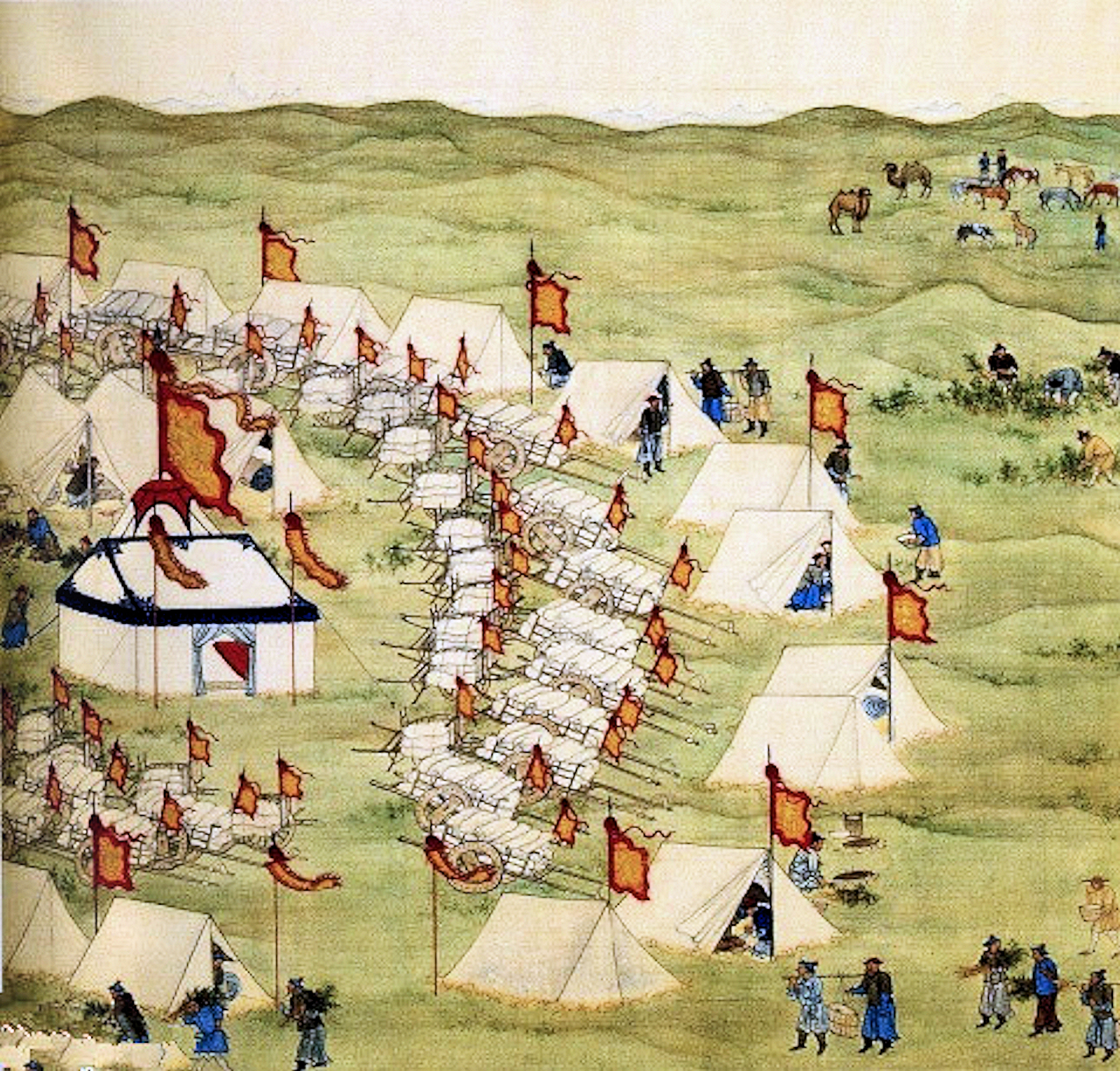Battle of Jao Modo
| Battle of Zuunmod | |||||||
|---|---|---|---|---|---|---|---|
| Part of Dzungar–Qing War | |||||||
 Emperor Kangxi en route to attack the Dzungar Khan, Galdan Boshugtu, in 1696.. |
|||||||
|
|||||||
| Belligerents | |||||||
|
|
Dzungar Khanate | ||||||
| Commanders and leaders | |||||||
|
Kangxi Emperor (Sun Ssu-k'o) |
Galdan Boshugtu Khan | ||||||
| Strength | |||||||
| 50,000 | 30,000 | ||||||
| Casualties and losses | |||||||
| Unknown | 8,000 | ||||||
The Battle of Jao Modo (Mongolian: Зуунмод-Тэрэлжийн тулалдаан; Chinese: 昭莫多之战; pinyin: zhāo mò duō zhī zhàn) also known as the Battle of Zuunmod (literally "Battle of the Hundred Trees"), was fought on June 12, 1696 on the banks of the upper Terelj river 60 kilometres (37 mi) east of the modern-day Mongolian capital Ulaanbaatar. A Dzungar-Mongol army under the command of Galdan Boshugtu Khan was defeated by Qing armies personally led by the Kangxi Emperor. This decisive Qing victory in the early stages of the Dzungar–Qing Wars (1687–1758) effectively incorporated Khalkha Mongolia under Qing rule and relegated Dzungar Mongol forces to Inner Asia until they were finally defeated in 1758.
Attempts by the Qing court to maintain an uneasy peace between the eastern Khalkha and western Dzungar-Oirat Mongols ultimately collapsed when in 1687 forces loyal to the Khalkha Tüsheet Khan killed the brother of the Dzungar Mongol leader Galdan Boshugtu Khan in battle as he attempted to support the rival Zasaghtu Khalkha tribe. In defiance of orders from the Kangxi Emperor and the 5th Dalai Lama, Galdan swept eastward into Khalka territory in 1688, forcing the Khalkha Buddhist spiritual leader, Jebtsundamba Khutuktu Zanabazar and nearly 20,000 Khalkha refugees to flee south into present day Inner Mongolia and seek the protection of the Kangxi Emperor.
Motivated by the threat posed by a strong, unified Mongol state under Dzungar rule, the Kangxi Emperor began preparations to defeat Galdan. After the Qing successfully lured Galdan's forces closer to Beijing with promises of negotiating a peace treaty, Khalkha troops supported by the Qing army ambushed them in September 1690 at the battle of Ulan Butung, 350 kilometers directly north of Beijing near the western headwaters of the Liao River. Galdan managed to escape to the upper Kherlen River, about 1,000 kilometres (620 mi) northwest of Beijing, where he and his army encamped for the next six years. In 1691, the three Khalkha rulers declared themselves Qing vassals at Dolon Nor, ending the last remnants of the Yuan dynasty and allowing the Qing to assume the mantle of the Genghisid khans and merge the Khalkha forces into the Qing army.
...
Wikipedia
